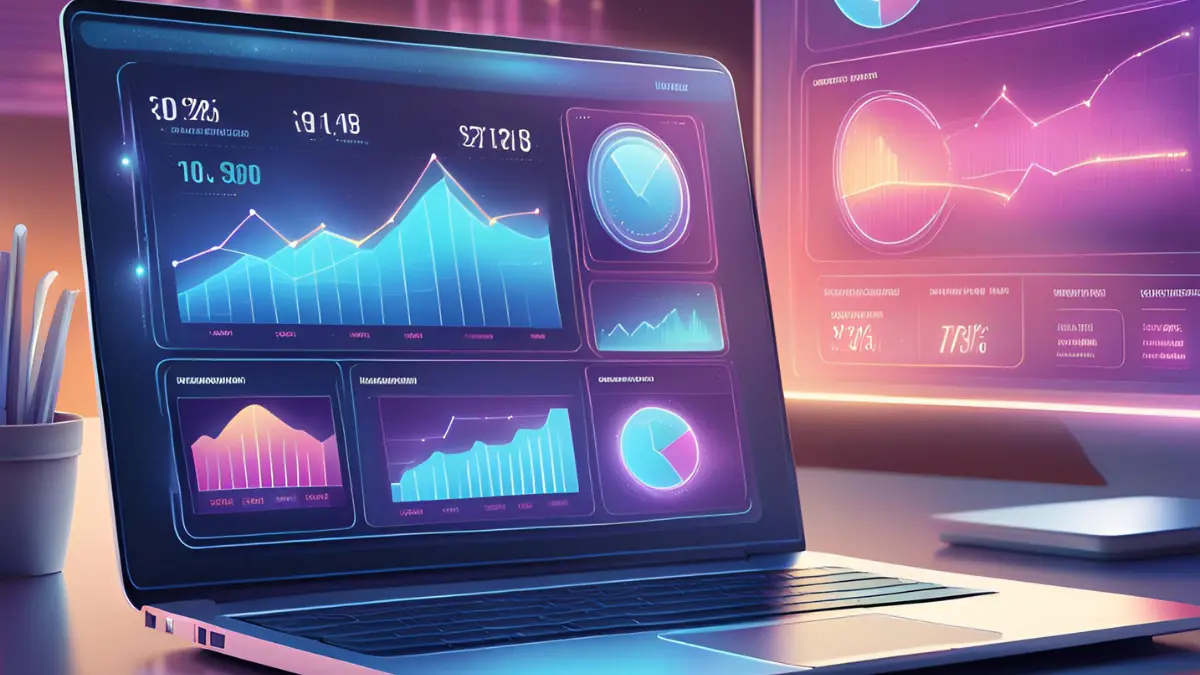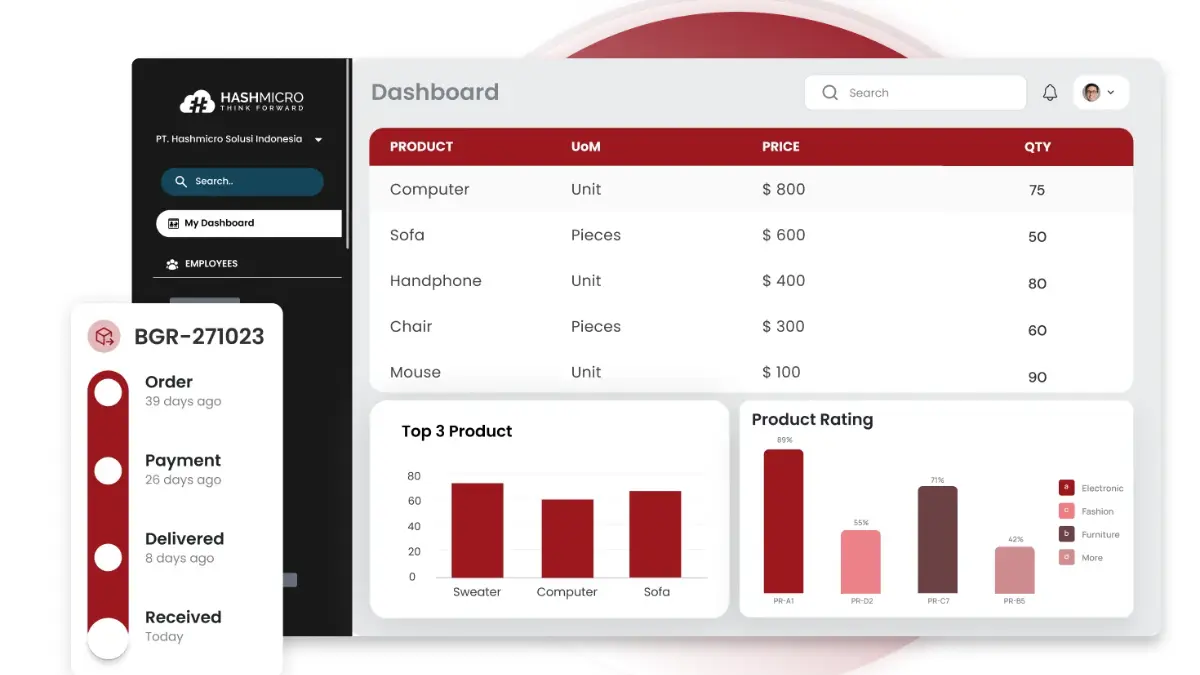In today’s competitive market, understanding tactical vs. strategic procurement sourcing is crucial for optimizing supply chain management. Both approaches are vital for aligning procurement processes with business goals, but they achieve these outcomes differently.
However, businesses often face significant challenges without knowing the procurement strategy, especially those without supporting software. Manual processes can lead to errors and miscommunication when handling purchase requests or orders. This lack of visibility can lead to poor decision-making, such as over-ordering, running out of stock, or paying more than necessary for goods.
To overcome these challenges, adopting the right procurement software is critical. According to a survey by IMDA, the adoption rate of technology among Singaporean businesses has risen from 74% in 2018 to 94% in 2022. This increase highlights the growing recognition of technology’s role in enhancing business operations and ensuring long-term success.
To simplify your procurement process and boost your business success, this article will explain the differences between Tactical Procurement and Strategic Procurement. You’ll also discover which software solution best suits your needs.
Table of Content:
Table of Content

Key Takeaways
|
What is Tactical Sourcing?
Tactical sourcing is a procurement system approach designed for short-term, low-risk purchases. It focuses on addressing immediate needs by selecting suppliers based on factors like price, availability, and delivery time.
This method is beneficial for emergencies or when the purchase does not significantly impact the overall business. However, because tactical sourcing prioritizes speed and efficiency over thorough planning, it may result in missed opportunities for long-term cost savings and added value.
Unlike strategic sourcing, tactical sourcing does not consider the organization’s broader needs or thoroughly evaluate a supplier’s strengths and weaknesses. This can lead to less informed decision-making, potentially affecting the business in the long run.
What is Strategic Sourcing?
Strategic sourcing is a proactive, long-term approach to procurement that focuses on building strong supplier relationships and enhancing overall business value. This method involves carefully evaluating suppliers based on innovation, quality, reliability, and commitment to sustainability.
Unlike tactical sourcing, which addresses immediate needs, strategic sourcing scrutinizes the entire supply chain to identify potential bottlenecks and uncover opportunities for improvement. By doing so, businesses can achieve sustainable growth while reducing costs and improving product or service quality.
Although strategic sourcing requires a more significant investment of time and resources, the benefits it provides in the long run—such as stronger supplier partnerships, cost efficiencies, and improved quality—make it a valuable approach for businesses looking to secure a competitive advantage.
The Difference Between the Two Sourcing Approaches
Tactical sourcing is a routine, often reactive approach that focuses on addressing immediate business needs. In contrast, strategic sourcing is typically planned and takes into account broader business goals and objectives.
The following is the difference between tactical and strategic sourcing:
1. Level of supplier collaboration
One key difference between tactical and strategic sourcing is the level of collaboration with suppliers. Tactical sourcing involves minimal collaboration and is primarily concerned with finding suppliers to meet immediate requirements at the lowest cost. This approach often results in transactional relationships, where suppliers are chosen based on their ability to deliver quickly and at a competitive price.
On the other hand, strategic sourcing emphasizes deep collaboration with suppliers. Businesses using this approach work closely with their suppliers to develop long-term partnerships that foster innovation, improve quality, and create mutual value. This collaboration often involves joint planning, shared goals, and a focus on continuous improvement.
If you want successful procurement software, you can start considering the best procurement software for businesses in Singapore. You can also try the free demo offered by HashMicro to learn more about the software that can support business efficiency.
2. Choosing the right strategy
The appropriate sourcing strategy depends on your business’s specific needs and circumstances. Tactical sourcing may be the right choice when speed and cost are critical, such as in emergencies or when dealing with low-risk, low-value purchases. This strategy allows businesses to respond quickly to changing market conditions or unexpected demands.
Conversely, strategic sourcing suits businesses seeking long-term cost efficiencies and quality improvements. It requires a more significant upfront investment of time and resources, but the benefits, such as stronger supplier relationships and better overall value, can be substantial. Therefore, businesses focusing on sustainability, innovation, and long-term growth are more likely to benefit from strategic sourcing.
3. Business needs and goals
Your business needs and goals are crucial in determining whether tactical or strategic sourcing is better suited. Tactical sourcing is ideal for addressing short-term needs requiring immediate action, such as filling a sudden supply gap or capitalizing on a temporary market opportunity.
In contrast, strategic sourcing aligns with broader business objectives, such as reducing the total cost of ownership, improving supplier quality, or achieving sustainability goals. This approach integrates procurement into the business strategy, ensuring that sourcing decisions contribute to long-term success.
4. Vendor relationships
Vendor relationships also differ significantly between tactical and strategic sourcing. In tactical sourcing, vendor relationships are often short-term and focused on immediate transactions. This can result in a less stable supply chain, as vendors may not be as committed to the business due to the lack of ongoing partnerships.
Strategic sourcing, however, prioritizes the development of solid and long-term relationships with key vendors. These relationships are built on trust, mutual benefit, and shared goals. By investing in these partnerships, businesses can secure more reliable supplies, negotiate better terms, and collaborate on innovation and improvements that benefit both parties.
Pros and Cons of Tactical Sourcing
Tactical sourcing can be a practical approach for businesses that need to address immediate procurement needs quickly. However, like any method, it has its own advantages and challenges.
Understanding the pros and cons of tactical sourcing can help you determine when it’s the right strategy for your business.
Pros of tactical sourcing:
- Faster decision-making: Tactical sourcing allows buyers to find and purchase the necessary products quickly without lengthy processes. Skipping detailed legal or security checks helps speed up the overall timeline.
- Getting exactly what you need: Buyers can easily choose and buy the product they want from their preferred vendor. Often, stakeholders do their research and get quick approval from management.
- Flexibility to switch vendors: This approach makes it easy to switch to another vendor if the first one can’t meet your needs. It’s a flexible way to ensure you can always get what you need.
- Fewer restrictions: Tactical sourcing has fewer rules, making the process simpler and more adaptable. It’s designed to meet immediate needs without the burden of long-term commitments.
Cons of tactical sourcing:
- Less room for negotiation: With tactical sourcing, there’s often little opportunity to negotiate lower prices. Since purchases are usually one-time deals, buyers might have to pay full price.
- Risk of running out of stock: This approach can lead to situations where products aren’t available when you need them, forcing you to look for alternatives. This can be problematic, especially for critical items.
- Increased risk with new vendors: Working with unknown vendors in tactical sourcing can lead to more risks, such as supply chain issues. The focus on speed can sometimes mean skipping important security and legal checks.
- No guarantees on availability: Tactical sourcing doesn’t offer long-term guarantees that products will be available. This uncertainty can make it harder to keep a steady supply, mainly when demand is high.
Despite the disadvantages of tactical sourcing, you can achieve its efficiencies with the right procurement ERP software. HashMicro offers comprehensive solutions that streamline your sourcing process, ensuring you maximize benefits while minimizing risks.
5 Reasons to Choose Strategic Sourcing vs. Tactical Sourcing
Choosing between tactical and strategic sourcing can significantly impact your business’s success in procurement. While tactical sourcing is helpful for immediate, short-term needs, strategic sourcing offers long-term benefits that can dramatically enhance your procurement strategy.
Here are five compelling reasons to choose strategic sourcing over tactical sourcing.
1. Strong supplier relationships
One key advantage of strategic sourcing is building strong, long-term supplier relationships. Unlike tactical sourcing, which often results in transactional interactions, strategic sourcing emphasizes collaboration and partnership.
By investing time and effort into nurturing these relationships, you can secure better terms, improve product quality, and create a more reliable supply chain. This mutual trust and commitment between you and your suppliers increases stability and long-term benefits.
2. More buying leverage
Strategic sourcing enables more effective leverage of buying power through long-term contracts and larger purchase volumes, often resulting in better prices, favorable terms, and exclusive deals. This approach not only enhances your negotiation capabilities but also informs smarter purchase decisions by aligning them with broader business strategies and goals.
Conversely, tactical sourcing, which prioritizes short-term gains and quick solutions, lacks this leverage and does not offer the same negotiation opportunities. Over time, the cost savings and added value from strategic sourcing, coupled with informed purchase decisions, can significantly boost your bottom line.
3. Streamlined process
A strategic sourcing approach not only leads to a more streamlined procurement process but also facilitates a better evaluation of suppliers and establishes clear criteria for selection. This reduces the time and effort required to manage multiple vendors.
Additionally, strategic sourcing can incorporate practices like sole source procurement, where goods and services are purchased from a single supplier because of unique expertise, compatibility with existing systems, or proprietary offerings, further simplifying the procurement process and enhancing negotiation leverage.
This streamlined process not only improves efficiency but also allows your procurement team to focus on more strategic activities, such as innovation and risk management. In contrast, tactical sourcing often involves repetitive and time-consuming tasks, as each purchase may require a new search for suppliers.
4. Lower third-party risk
Managing third-party risk is crucial in today’s complex supply chains, and strategic sourcing offers a more effective way. By carefully selecting and vetting suppliers, you can minimize the risk of disruptions, quality issues, or compliance failures.
Strategic sourcing also encourages ongoing monitoring and assessment of suppliers, ensuring they meet your standards. On the other hand, the reactive nature of tactical sourcing can leave your business vulnerable to unforeseen risks, as there’s less time and effort spent evaluating suppliers’ reliability and stability.
5. Inventory guarantees
Finally, strategic sourcing often comes with inventory guarantees that tactical sourcing cannot match. Suppliers are more likely to commit to holding or producing inventory specifically for your business through long-term agreements.
This ensures you have a consistent supply of critical materials or products, reducing the risk of stockouts and production delays. Tactical sourcing, focusing on immediate needs, may not offer the same level of inventory assurance, which may lead to costly disruptions.
HashMicro is One of the Best Solutions for Procurement Efficiency
HashMicro is recognized as one of Singapore’s leading ERP software providers. It offers solutions to support businesses of all sizes in achieving efficient tactical sourcing through effective procurement management.
If you’re interested in exploring this software further, you can try a free demo to see its features in action. This opportunity lets you experience firsthand how HashMicro can enhance your procurement strategy.
What sets HashMicro apart from other solutions is its ability to seamlessly integrate with third-party systems and its flexibility in customizing features to meet your business requirements. This ensures that you get a solution tailored to your unique needs.
With HashMicro’s Procurement Management System, your business can streamline procurement processes and ensure that sourcing decisions align with your operational needs. HashMicro also offers comprehensive features, including:
- PO, RFQ & PR Management: Using this feature, you can easily create purchase requests and seamlessly convert them into purchase orders with just a few clicks. Additionally, you can send requests for quotations (RFQs) to suppliers through our efficient procurement system, streamlining the entire purchasing process.
- Work Order Receiving: This feature ensures that your company receives the correct items in the right quantities while maintaining accurate records of all received goods. It simplifies the receiving process, helping you avoid errors and keep your inventory up to date.
- PR Approval Management: With this feature, you can approve or reject purchase requests from various business locations, departments, or employees with just one click. It’s a unified system that simplifies procurement approval, saving you time and ensuring consistency across the board.
- Online Portal for Suppliers: This feature allows vendors to upload their catalogs directly through a supplier portal, making it easier to access product information. It also streamlines the tender process, helping your company secure the best deals more efficiently.
- Blanket Order Management: Using our e-procurement system, you can manage blanket orders according to pre-agreed prices and schedules with suppliers. This feature ensures certainty and efficiency in your procurement operations, reducing the need for repetitive ordering.
- Landed Cost Calculation: This feature lets you calculate the total cost of purchasing goods, including shipping, insurance, and customs duties. It gives you a clear understanding of the final costs involved in your procurement, helping you make better financial decisions.
Conclusion
Understanding the differences between tactical and strategic sourcing is crucial for achieving efficiency in procurement management. Depending on your business needs and goals, both approaches play vital roles.
Moreover, with the right procurement software, you can optimize tactical sourcing to meet your business’s immediate needs efficiently. This combination of knowledge and technology ensures your procurement process is effective and streamlined.
HashMicro’s Procurement Management Software is the best choice for enhancing tactical sourcing efficiency. Its comprehensive features and flexibility make it an invaluable tool for any business.
To explore how HashMicro can transform your procurement process, try a free demo today and discover all the benefits firsthand.

FAQ About Tactical Sourcing
-
What is tactical level of sourcing?
Tactical sourcing is an approach to sourcing that emphasizes fast requisition, quote, and order processes. Tactical sourcing is short-term and transactional with the goal of pursuing shorter lead times, high-quality goods or services, and low prices.
-
What is the difference between strategic and tactical outsourcing?
Tactical Sourcing focuses on cost-effectiveness, while Strategic Sourcing considers cost, quality, innovation, and risk. Tactical and strategic sourcing can converge for effective talent acquisition. Create hybrids and learn from exemplars for a balanced approach.
-
What is an example of tactical outsourcing?
Tactical outsourcing, also known as traditional outsourcing, is when a company outsources a specific function or project to another company. For example, if your company is short-staffed and needs help with customer service, you would outsource that specific function to an external service provider.
-
What are the 4 pillars of sourcing?
1. Expenditure analysis: Evaluating spending patterns and identifying cost-saving opportunities.
2. Strategic procurement: Developing long-term plans to source goods and services efficiently.
3. Contract oversight: Managing and reviewing agreements to ensure compliance and performance.
4. Supplier relationship management: Building and maintaining strong relationships with suppliers to enhance cooperation and performance.






















































